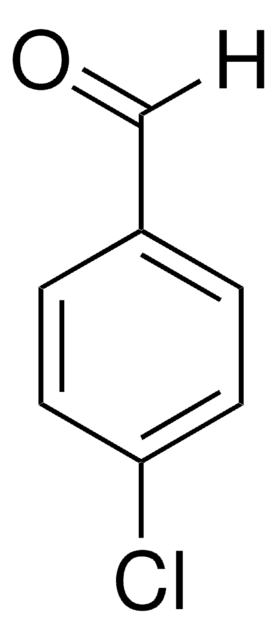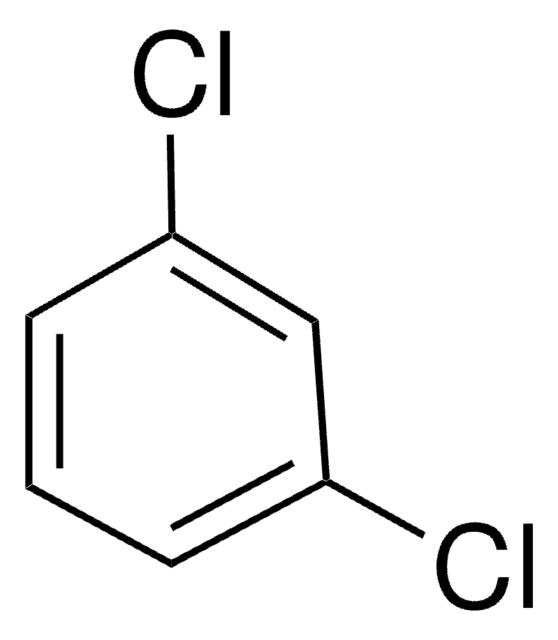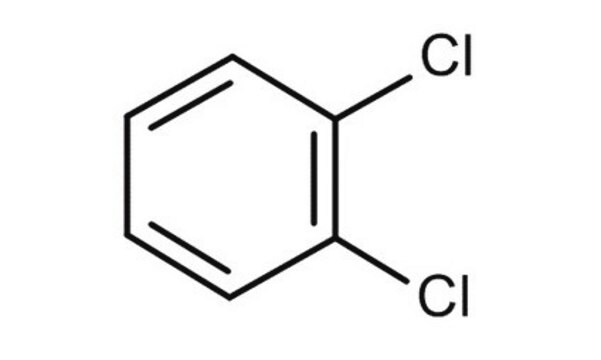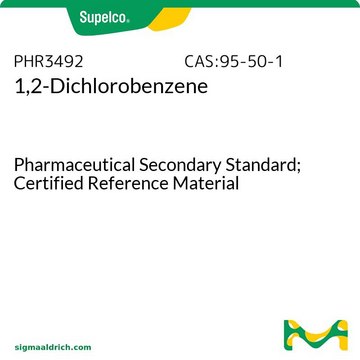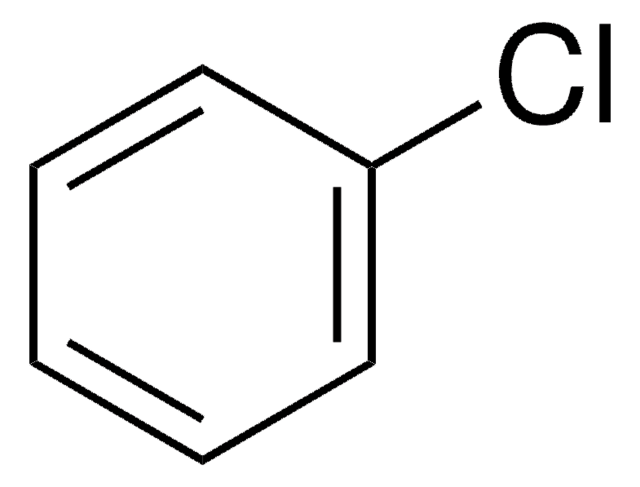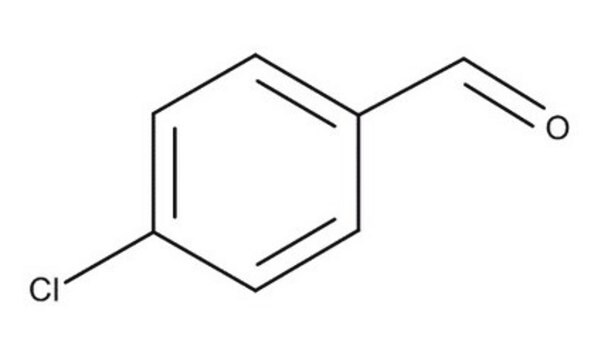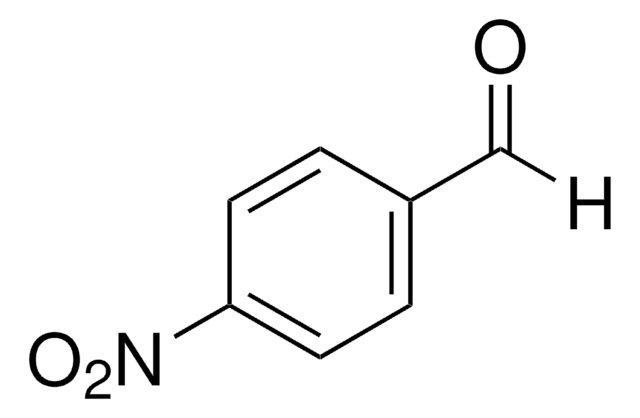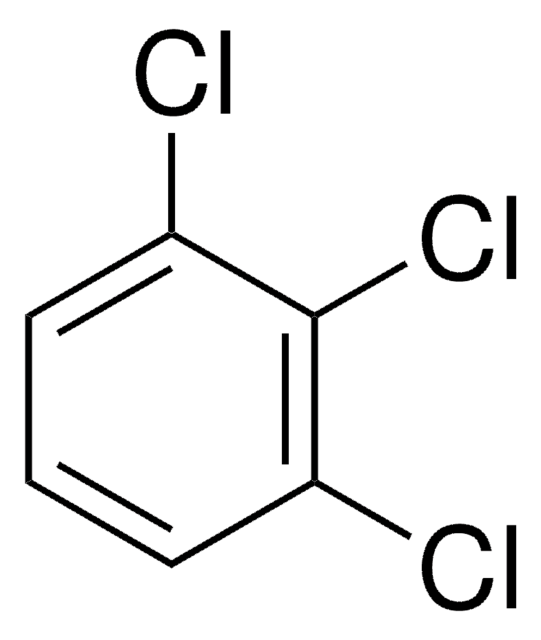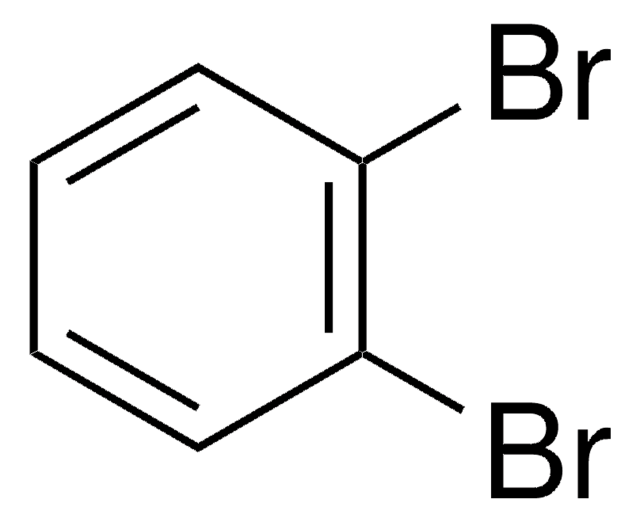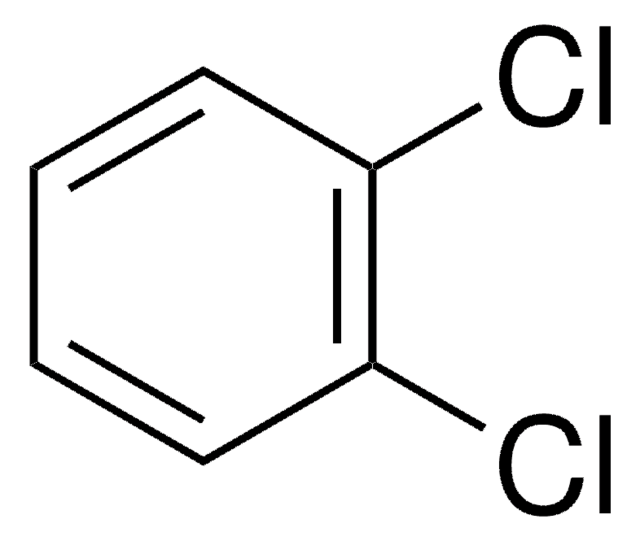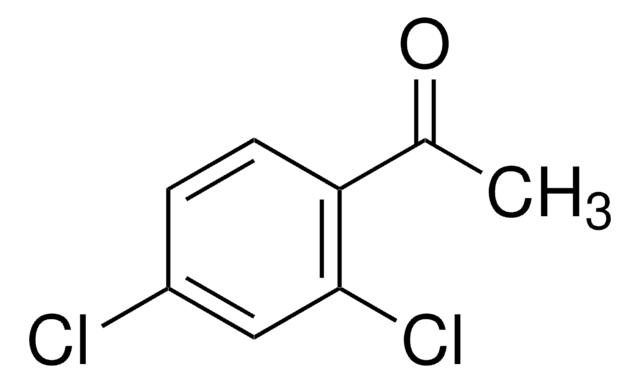113808
1,3-Dichlorobenzene
98%
Synonyme(s) :
m-Dichlorobenzene
About This Item
Produits recommandés
Pression de vapeur
5 mmHg ( 38.8 °C)
Pureté
98%
Forme
liquid
Indice de réfraction
n20/D 1.546 (lit.)
Point d'ébullition
172-173 °C (lit.)
Pf
−25-−22 °C (lit.)
Solubilité
H2O: soluble 1.23 mg/L
alcohol: soluble
diethyl ether: soluble
Densité
1.288 g/mL at 25 °C (lit.)
Chaîne SMILES
Clc1cccc(Cl)c1
InChI
1S/C6H4Cl2/c7-5-2-1-3-6(8)4-5/h1-4H
Clé InChI
ZPQOPVIELGIULI-UHFFFAOYSA-N
Vous recherchez des produits similaires ? Visite Guide de comparaison des produits
Catégories apparentées
Application
Mention d'avertissement
Warning
Mentions de danger
Conseils de prudence
Classification des risques
Acute Tox. 4 Oral - Aquatic Chronic 2
Code de la classe de stockage
10 - Combustible liquids
Classe de danger pour l'eau (WGK)
WGK 2
Point d'éclair (°F)
152.6 °F - closed cup
Point d'éclair (°C)
67.0 °C - closed cup
Équipement de protection individuelle
Eyeshields, Faceshields, Gloves, type ABEK (EN14387) respirator filter
Certificats d'analyse (COA)
Recherchez un Certificats d'analyse (COA) en saisissant le numéro de lot du produit. Les numéros de lot figurent sur l'étiquette du produit après les mots "Lot" ou "Batch".
Déjà en possession de ce produit ?
Retrouvez la documentation relative aux produits que vous avez récemment achetés dans la Bibliothèque de documents.
Les clients ont également consulté
Protocoles
US EPA Method TO-17: GC Analysis of Volatiles on VOCOL® after Collection/Desorption using Air Toxics Tube
Notre équipe de scientifiques dispose d'une expérience dans tous les secteurs de la recherche, notamment en sciences de la vie, science des matériaux, synthèse chimique, chromatographie, analyse et dans de nombreux autres domaines..
Contacter notre Service technique